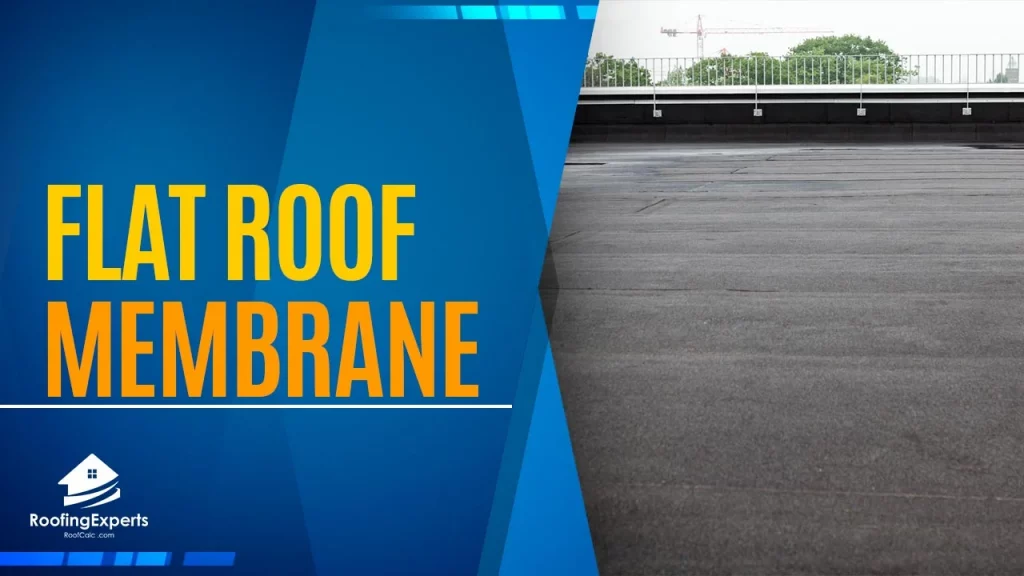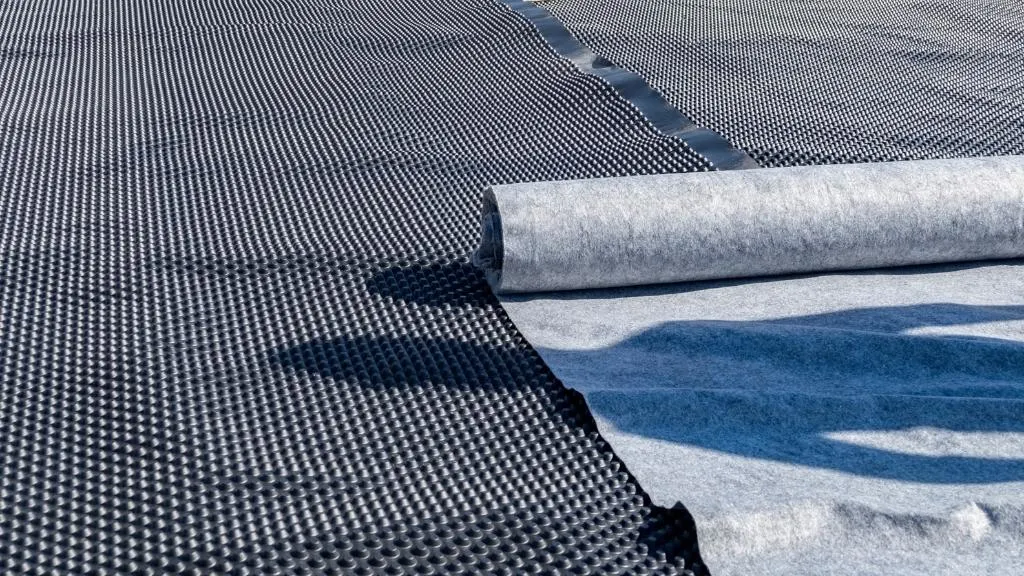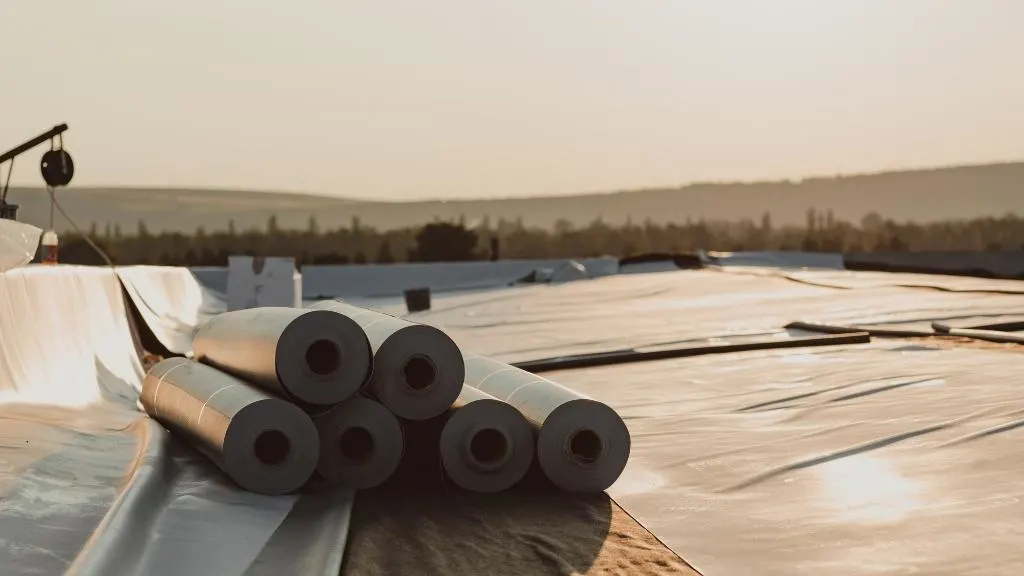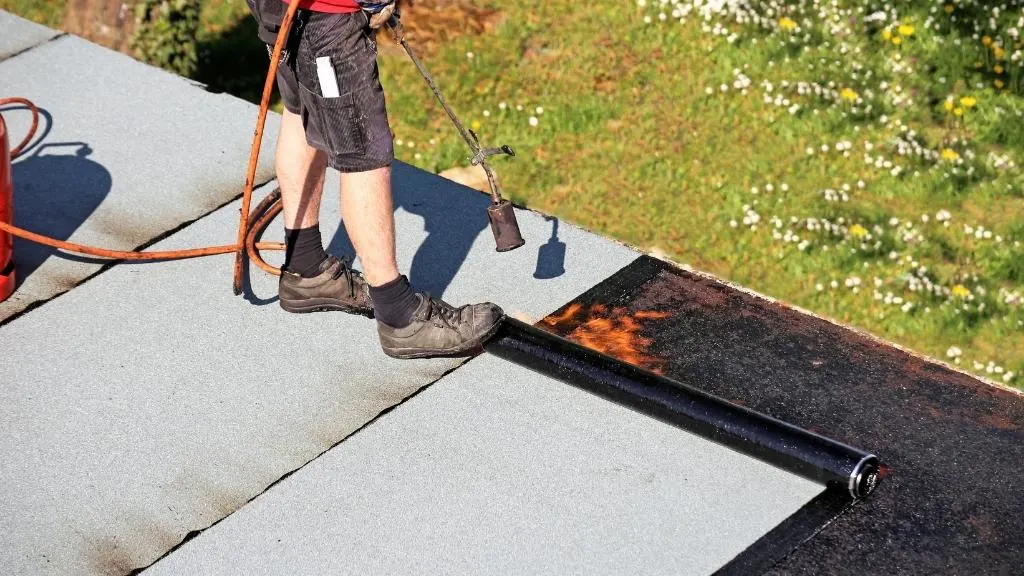
What is the best type of roof membrane for your home? That’s a question that can be complicated to answer, but one that everyone with a residential roof needs to know.
Flat roofing membranes come in many types including single-ply, double-ply and modified bitumen. Each type has its own pros and cons depending on the climate you live in, how flat your roof is and more.
This blog post will discuss what each type offers so you can make an informed decision about which kind of flat roof membrane best suits your needs.
What is a Roof Membrane?
With roof membranes, roofs are leak free.
They also provide protection against natural disasters like hail storms and heavy winds that can damage homes in their wake without compromising aesthetics or insulation efficiency with other materials on the market today!
It’s no surprise why so many homeowners have started opting for having roof membrane on their roofing systems over traditional styles; since these innovative products offer superior performance across all categories including cost effectiveness as well as energy savings due to passive design features such at R-Values which relate directly back down to Insulation Value.
The insulation value measures how effective it will be when protecting your house from outside elements and heat transfer through conduction and radiation.
Why Use Flat Roof Membranes for a Flat Roof?
There are many reasons to have a flat roof. For one, they’re not the most glamorous option but their pros easily outweigh any cons in this case.
The price of repair can be cheaper than other types and construction only requires an underlayer instead of building up layers on top like shingles or tiles which oftentimes make for more difficult repairs down the line if something goes wrong with them later-on.
This is because those parts require specific skill sets from someone who knows what they’re doing as opposed to more manageable single layer roofs where water usually pools at seams between panels due to the slope.
Moreover, flat roofs are not only cheaper to construct but are also easier to install, maintain and repair as well.
They can last up to 50+ years with proper care which is why they’re often chosen by homeowners who opt for this roofing style plus it doesn’t matter if you live in a wet area or one that is extremely hot where it might be difficult to maintain a tiled roof; because flat roofs are much simpler and cheaper to build, maintain and replace down the road.
What Types of Roof Membranes Exist?
A metal or membrane roof is the perfect solution for a screened-in porch with low slopes. Not only does it shield from water damage, but also prevents it from bugs that love to nestle in those cracks!
There are three types of flat roof membranes that you can choose from when building or repairing your home, each with different properties for different climates.
They are modified bitumen, single-ply rubber and double-ply rubber membranes. These 3 roofing membranes are well-known as the EPDM, TPO and PVC.
All have their place in residential roofs but it depends on what you want for your house as well as what rooms below the main part will be exposed to rain or snowfall, such as attics, garages or porches.
EPDM
Stands for ethylene propylene diene terpolymer, is the best choice for an outdoor porch that’s completely exposed to the elements.
It has excellent resistance against water, snow, ice and other harsh conditions without requiring additional coating or maintenance down the line.
This single-ply membrane can last up to 50+ years with regular roof washing procedures and roof maintenance.
EPDM is a synthetic rubber with many different applications. It can be found in the vast majority of commercial buildings, but it also has its place on residential roofs as well!

TPO Membrane Roofing
Stands for thermoplastic polyolefin, TPO membranes for roofing are single-ply white membranes that do not absorb heat like EPDM, but reflect it.
These types of materials can be used by both commercial and residential properties because they do not make buildings more vulnerable to natural disasters like hurricanes or tornadoes which makes this membrane an excellent choice in these circumstances!
Flat roofs and dormers are great spaces to install TPO because they’ll stay cooler.
You can get a material that is made of synthetic rubber, like EPDM for non-living rooms in the house if you want something more durable or natural options such as tar paper.
It’s important to have a membrane that will do the job of keeping your flat roof leak-free, but different colors stain differently.
If you want better visibility when looking out windows then choose white or silver as an option because they won’t be so dirty over time.
TPO membrane is a very durable polymer that can last 25 years if installed properly which does not last longer than EPDM.
PVC Membrane Roofing
Stands for polyvinyl chloride, PVC membrane roofing is an excellent choice for any flat or low slope over a living space.
It has better performance in inclement weather, and doesn’t require as much maintenance which means it can last up to 20 years with proper care!
PVC membrane roofing is also called single-ply white roofs. They’re perfect for any commercial or residential space with low slopes that need protection from the elements, like bedrooms and living rooms!
PVC and TPO are often confused for each other.
They both have a white membrane, but they also differ in many ways besides just their color! PVC’s installation process may be similar to that of TPOs because they both require sealing around windows or doors with specific materials.
PVC is a bit more flexible and has been around for longer, but the main difference between it and TPO are those 25 years you can expect if installed properly.
Other Flat Roof Membrane Types to Consider
Single-Ply Rubber or Synthetic Rubber
This type of roof is the most expensive and requires a skilled contractor to install plus you’ll need an experienced applicator as well since it’s self-adhering and doesn’t require any seams or clips due to its protective nature.
It also comes with 10 year warranted material but can last up to 50 years if maintained.
Finally, double-ply rubber or synthetic rubber membranes are the most expensive option by far; it’s also the longest lasting with up to 60 year warranted material plus it can be used on slopes of up to 20 percent.
It doesn’t require adhesives so no skilled applicators are needed either which is why it’s often preferred for many different types of flat roofs.

Modified Bitumen
Another name for modified bitumen is hot asphalt; it’s also one of the most commonly used types.
This is because it offers good weather-ability, meaning that rainwater penetrates through to the roof deck but can’t permeate back through the membrane.
This means you won’t have to worry about leaks and it’s also resistant to ageing, UV rays and ozone–meaning that it can sustain an environment where there is a lot of sunlight or rain without fading, cracking or rotting over time.
This roofing choice primarily consists of asphalt but comes with a modifier to increase the durability and life expectancies of its material.
It is also one of the most cost-effective options for flat roofs available in the market today although it doesn’t come with a warranty like some other choices might; however, if you find problems with your membrane after installation, it may be covered by an insurance policy–check with your contractor before they begin installation.
Thermoplastic Membrane
This is the most common choice for flat roofs because it can be used in all climates without shunning in heat or freezing in cold weather.
It’s highly resistant to ageing, UV rays and ozone which is why it lasts so long plus it requires less labour-intensive work since adhesive is not needed for this type of roofing membrane.
The thermoplastic membrane is also self-adhering which means it sticks to the materials beneath itself, so you don’t have to worry about any seams.
Modified bitumen is the most common choice due to its affordability and availability in many different types of materials including rubber or plastic; however, if you live somewhere that receives a large amount of rainfall or where the soil is poorly drained, it might be a good idea to choose another option.
Asphalt needs time to settle and cure so not only must you sign a contract stating that the work cannot be charged for any problems after installation but also allow at least three days before you can go up on your roof since the material will take over 24 hours to harden.
This is why modified bitumen is not one of the best choices for homes where you’ll need to do repairs or fix leaks after installation even though it comes with an insurance policy which may cover any future expenses; this warranty usually lasts between 5-10 years depending on the contractor and your region.
On the other hand, single-ply or double-ply rubber membranes are very expensive to install, especially if you’re looking for a warranty similar to modified bitumen.
This is because it can be difficult for contractors to find an insurance agency that will cover the cost of any future repairs or replacement materials, so your warranty might not be that great which defeats the purpose of why you chose an expensive roofing choice in the first place.
Modified bitumen is preferred because there’s no need for adhesive and it can be rolled on to your existing roof, however, if you live somewhere where temperatures frequently drop below -40 degrees Celsius, this type of material might not work well with your roof. Although single-ply or double-ply rubber membranes can be more expensive to install, they’re a better choice for colder climates since the material is flexible and will keep your home warmer in wintertime.
How can I tell which type is right for me?
Since each roofing membrane has its own unique set of benefits and requirements, you’ll need to consider what kind of climate you live in as well as how much you can spend to see what type might work best for your home.
If your area experiences a lot of heat or cold then thermo plastic would be your best choice since it’s specifically made for extreme climates, but if you need to do some repairs or fix leaks on your flat roof after installation, you might want to consider where the nearest insurance agency is located just in case.
If money isn’t an issue, then single-ply or double-ply rubber is right for you because it can withstand varying temperatures much better than other types of flat roofing membranes, but if you live in an area where there are large amounts of rainfall, go with modified bitumen because it comes with a warranty that protects your home against any future damages or leaks.
Requirements for Installing a Flat Roof Membrane
Preparing the roof deck is one of the most important factors when installing a new roof–this means that all vegetation must be removed, sand or gravel should be laid down and surfaces must be prepped so it can install correctly.
Before you sign any documents, the contractor must perform a roof inspection to determine if it’s strong enough to install any new materials.
If your home needs extra support, they’ll be able to provide suggestions as well as additional services that might increase the life of your flat roof membrane.
The surface area where the installation will take place has to be cleaned of any dust, gravel or sand using a high-pressure washer.
It’s also imperative to keep this area dry so that the roofing material has the necessary support it needs for installation.
Before installing your flat roof membrane, your contractor will provide you with an estimate on how much material is required as well as give you tips on how to properly maintain it so that you can enjoy your new roof for many years to come.


